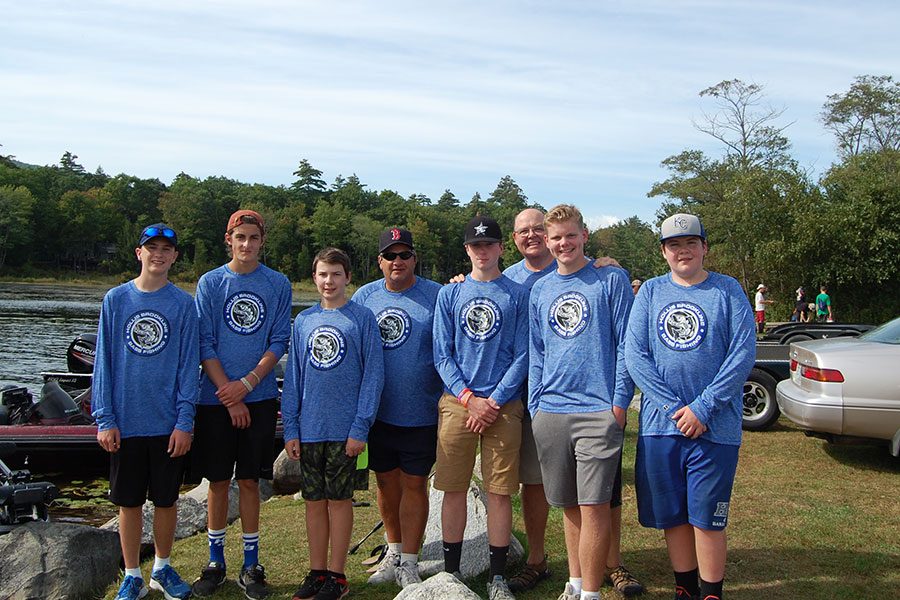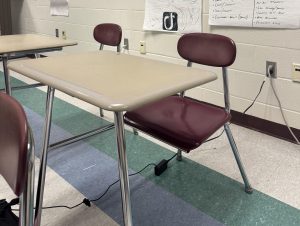A beginners guide to freshwater fishing
The Bass Fishing team poses before their tournament in September of 2017. The team freshwater fishes for the fall season.
May 15, 2018
Spring is here and fishing season started on April 1. Prior to going fishing, make sure you have purchased your fishing license if you’re 16 or older and you know the rules and regulations for fishing.
After you get the proper license, if necessary, you then need to assemble your equipment. Your equipment can vary depending on what type of fish you intend to catch. For a fishing pole, you could get a $10 rod and reel combo, or you can spend more than $300. You will also need hooks (catches the fish), sinkers (adds weight to bring bait to bottom) and bobbers (floats and brings bait closer to the top).
Next you will need pliers (to remove the hook from the fish), a tackle box (to store your equipment), and bait (attracts the fish to the hook). Optional items include: a boat–this allows you to get to the middle of the pond, a minnow trap to catch bait, fish finder (finds the fish with sonar), tape measure (allows you to measure the fish so you know if it’s legal to keep), scale (allows you to weigh the fish for bragging rights), fillet knife (to clean the fish if you decide to keep it) and cutting board (a surface to clean the fish on).
Once you assemble your equipment, you need to find a place to fish. Some nearby lakes and ponds include: Rocky pond, Flints pond, Silver lake, Lake Potanipo, and Melendy pond. Once you have picked a body of water, scout around for good spots on the bathymetry maps on the fish and game website; a bathymetry map is a map of a body of water. When you arrive at the body of water, look for dead fall and lily pads.
Now that you have found a spot to fish, you need to select a bait or lure for the fish you want to catch. For example, if you wanted to catch a largemouth bass, the size of the bait won’t matter as much because it has a large mouth, (hence the name) but if you wanted to catch a yellow perch then you want a bait or lure that is smaller, because they have small mouths. Certain fish have specific diets and you want to mimic the diets of the fish you want to catch with your selection of lures and bait. To help educate yourself, the fish and game website has this information on each type of fish in New Hampshire..
The best thing you can do is just get out there and fish. Bring a friend or family member who knows how to fish, or just go solo and figure out how to do it yourself. If you don’t feel confident that you are ready to fish,there are classes held by fish and game (registration is on the fish and game website). The most important part is to just get out there and try it out for yourself!














